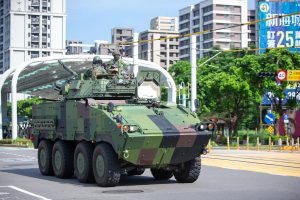The biennial National Defense Report is one of Taiwan’s most important defense documents. In addition to outlining the government’s recent defense policies, it also serves to communicate to the international community Taiwan’s defensive posture and determination in the face of threats from China.
Notably, the report explains the evolution of Taiwan’s defense thinking from multiple perspectives – including force structure, training, and equipment – showing how the armed forces have adapted to a changing threat environment. Beyond informing the public of the military’s progress, it also conveys Taiwan’s strategic stance to the world. The National Defense Report is thus a crucial document for explaining strategy domestically and expressing policy resolve externally.
The National Defense Report also functions as an essential resource for national defense education. The 2025 edition, released on October 9, specifically addresses the changing international environment following the inauguration of U.S. President Donald Trump, maintaining a focus on Taiwan’s security context as the main analytical framework.
It emphasizes the most significant threat to Taiwan – the People’s Liberation Army (PLA) of the People’s Republic of China. It is important to note, however, that the report is not meant to provide an overview of China’s military power. Rather, it focuses on the threats the PLA poses to Taiwan and identifies how recent developments differ from those of the past. These changes are used to introduce Taiwan’s subsequent adjustments in defense posture – discussed beginning in Chapter 3, which addresses strategic guidance and defense capabilities.
In analyzing Taiwan’s defense strategy, the concept of resilience has become a central theme in this year’s report. While Taiwan has long emphasized deterrence – aiming to prevent aggression through credible defense – the PLA’s growing capabilities and the Chinese Communist regime’s increasingly irrational decision-making make unexpected military action possible. Although Taiwan will not initiate hostilities, it must possess the ability to withstand an attack, preserve combat power, and mobilize reserves and civilian resources to launch a counteroffensive – thereby shattering Beijing’s illusion of a quick and decisive first strike. This reflects the core idea of resilience, which has repeatedly appeared in recent defense discussions.
In previous Han Kuang exercises, the focus was primarily on the mobilization and maneuvers of regular armed forces. However, the Han Kuang 41 exercise, held in July 2025, made the unprecedented decision to integrate civil defense drills. This development draws upon recent lessons from international conflicts, where the distinction between front lines and rear areas has blurred – and under the dynamics of gray zone warfare, even the line between peacetime and wartime has grown increasingly indistinct. Defensive resilience is therefore not only required in combat; it is also vital during natural disasters, ensuring social continuity and public safety.
This year’s report further explains how the military can integrate civilian power to strengthen overall defense capability, as concretely demonstrated in the Han Kuang 41 exercise held in May. As such, resilient defense is not just a slogan, but a concrete defense policy and a guiding principle for Taiwan’s overall national defense strategy.
The report also details Taiwan’s acquisition of new weapons systems and progress in indigenous defense development, particularly in the field of unmanned systems. Unmanned platforms – whose value has been repeatedly proven in the Russia-Ukraine war – are a key focus of Taiwan’s force modernization. With the introduction of the M1A2T main battle tank, HIMARS multiple-launch rocket systems, and various unmanned aerial and maritime vehicles, Taiwan’s defense capabilities are undergoing significant transformation.
The integration of new and legacy systems into a coherent defense strategy requires not only doctrinal updates and procedural revisions but also rigorous training and exercises to validate tactics and convert them into operational capability. These are the directions in which Taiwan’s defense efforts must continue to evolve beyond the report itself.
The National Defense Report is not confined to theoretical discourse. Many of its concepts have already been tested in practice – such as during the Han Kuang 41 exercise in July 2025 – and reflected in the defense industry’s achievements showcased at the Taipei Aerospace & Defense Technology Exhibition held in Nangang in August 2025. These examples embody the report’s strategic direction. Furthermore, this year’s National Defense Report has moved beyond print by incorporating video podcasts, using audiovisual media to communicate defense concepts to the public. Citizens can now listen to expert analyses of each chapter during their commutes, or engage with dramatized radio segments designed to make defense issues more accessible.
This innovation demonstrates that the National Defense Report is not merely a bureaucratic publication of the Ministry of National Defense – it is a cornerstone of Taiwan’s national security strategy, bridging past achievements with future objectives. It not only summarizes the military’s progress over the past two years but also articulates Taiwan’s strategic vision for the years ahead, translating national security policy into concrete action and sustained defense guidance.




























